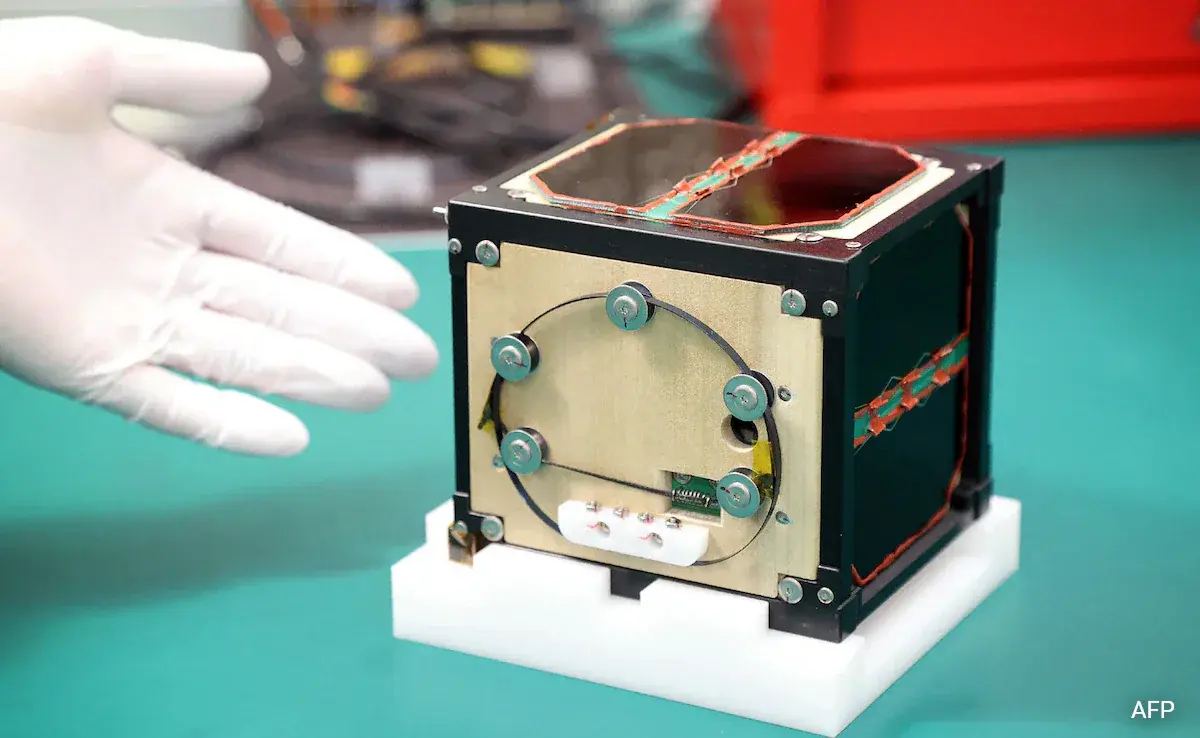About LignoSat:
- LignoSat”, a fusion of “ligno” (the Latin word for wood) and “satellite”.
- It is developed through collaborative research and development by a team comprising members from Kyoto University and Sumitomo Forestry Co.
- Objective: Their objective is to leverage the eco-friendliness and cost-effectiveness of wood in space exploration.
- It is tasked to demonstrate the cosmic potential of the renewable material as humans explore living in space.
- It is constructed from magnolia wood, chosen for its durability and adaptability.
- It will first be sent to the International Space Station (ISS) aboard a SpaceX rocket from the Kennedy Space Center.
- Once it reaches the ISS, it will be released from the Japanese experiment module to test its durability and strength.
- Researchers will receive data from the satellite to monitor its performance, including signs of strain and its ability to withstand extreme temperature changes.
- Why is wood used? : Wooden satellites are viewed as more environmentally friendly upon reentering the Earth’s atmosphere at the conclusion of their mission. Unlike metal satellites, which pose air pollution risks due to the generation of metal particles during reentry, wooden satellites mitigate these concerns.
Q1: What is the International Space Station?
It is a large spacecraft in orbit around Earth. It serves as a home where crews of astronauts and cosmonauts live. The space station is also a unique science laboratory. It is a unique international collaboration among five space agencies: NASA, Roscosmos, JAXA, ESA, and CSA.
News: World’s first wooden satellite, developed in Japan, heads to space
Last updated on November, 2025
→ Check out the latest UPSC Syllabus 2026 here.
→ Join Vajiram & Ravi’s Interview Guidance Programme for expert help to crack your final UPSC stage.
→ UPSC Mains Result 2025 is now out.
→ UPSC Notification 2026 is scheduled to be released on January 14, 2026.
→ UPSC Calendar 2026 is released on 15th May, 2025.
→ The UPSC Vacancy 2025 were released 1129, out of which 979 were for UPSC CSE and remaining 150 are for UPSC IFoS.
→ UPSC Prelims 2026 will be conducted on 24th May, 2026 & UPSC Mains 2026 will be conducted on 21st August 2026.
→ The UPSC Selection Process is of 3 stages-Prelims, Mains and Interview.
→ UPSC Result 2024 is released with latest UPSC Marksheet 2024. Check Now!
→ UPSC Prelims Result 2025 is out now for the CSE held on 25 May 2025.
→ UPSC Toppers List 2024 is released now. Shakti Dubey is UPSC AIR 1 2024 Topper.
→ UPSC Prelims Question Paper 2025 and Unofficial Prelims Answer Key 2025 are available now.
→ UPSC Mains Question Paper 2025 is out for Essay, GS 1, 2, 3 & GS 4.
→ UPSC Mains Indian Language Question Paper 2025 is now out.
→ UPSC Mains Optional Question Paper 2025 is now out.
→ Also check Best IAS Coaching in Delhi

















